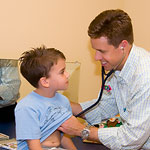By Dr. Phyllis Townsend
For most people eating is a normal part of their day, carried out routinely whenever they’re hungry. For a small group of people, eating is a stressful event — every mouthful is to be weighed and measured, calories counted and guilt for anything consumed. No matter how thin these people become, they see an overweight person in the mirror. These people suffer from Eating Disorders. It is a spectrum of disordered eating and altered body image that can range from restricting calories sometimes with excessive exercising, to self induced vomiting and laxative abuse, all with goal to encourage weight loss regardless of the need.
Eating Disorders (ED) present most commonly in adolescence, sometimes in the context of an overweight girl who begins to lose weight and then can’t stop. It is believed that societal pressures to be thin, combined with certain personality traits such as perfectionism, low self-esteem and sensitivity to rejection may place a person at risk. Family history can also play a role. More women than men are affected by ED, though the incidence among men is rising. Most patients report an early history of body image concerns even before they develop overt signs of an ED. Sports where thinness or weight loss are encouraged (gymnastics, cheerleading. cross country, or wrestling) are particularly prone to ED’s.
Signs that someone you know may have an ED include suddenly adopting an extreme diet. People who suddenly begin scrutinizing ingredient list, counting the calories or measuring out their food may be developing a problem. Constant talk about how fat they are when it is clear they are not should raise concern. As weight loss develops, the person may complain about being cold. They may wear lots of sweaters both for warmth and to hide their weight loss. They begin to lose the hair on their head, while body hair increases due to inadequate protein intake. Young women will eventually stop menstruating if inadequate calories are consumed. If weight loss is severe and prolonged, salt and water balance can become so abnormal that their heart fails. Remarkably the entire time their body is in decline from starvation, a person with an ED still believes they are too fat and will continue to restrict themselves.
Treatment involves therapy to gain insight into the disordered eating, as well as assistance from a nutritionist to develop meal plans. Hospitalization may be required for stabilization if the malnourishment is severe enough. Residential treatment facilities can be lifesaving for patients since this can be a life long battle. Between 5 and 20% of individuals with ED will die – from heart failure or suicide – making this one of the most lethal mental health conditions.
Ensuring your child sees his/her pediatrician yearly is a good way to keep track of growth. Pediatricians are trained to screen for eating disorders and may help identify disordered eating early before it becomes a true ED. If you notice someone, especially an adolescent girl, suddenly becoming obsessed with appearing thin and who appears to be losing excessive amounts of weight unnecessarily, take notice! Get them to a doctor to be evaluated. Getting someone into treatment early can be lifesaving.
Preventing an ED can be challenging in today’s weight conscious society. Eating as a family whenever possible so you can keep an eye on what is being eaten can be helpful. Try to talk about food as “healthy” without focusing on calories or fat content. Do not use dissatisfaction with body appearance as a motivator for change but instead a desire to be healthy. Most importantly, try to model good eating habits yourself.
The information and content on our website should not be used as a substitute for medical treatment or advice from your doctor.

